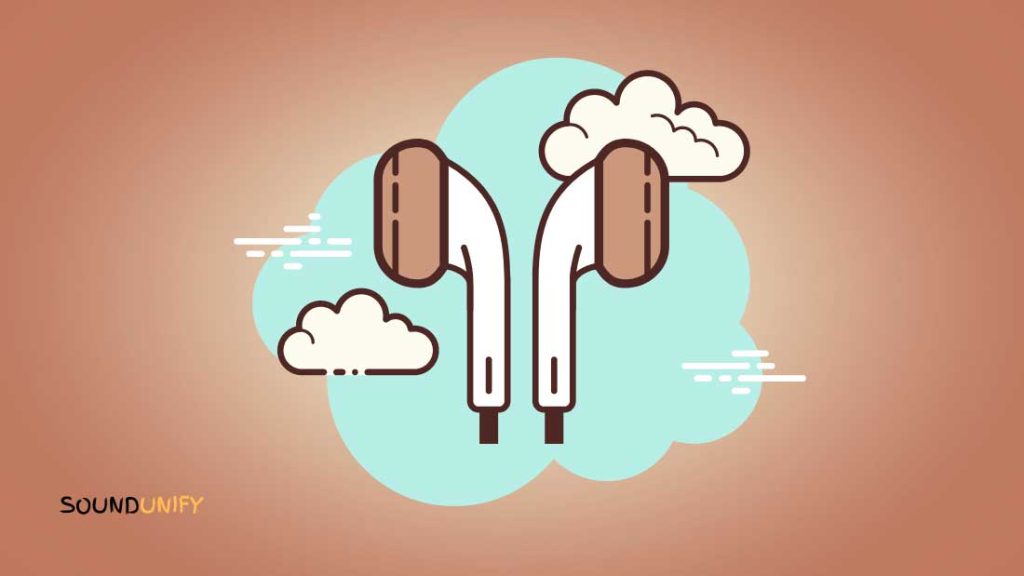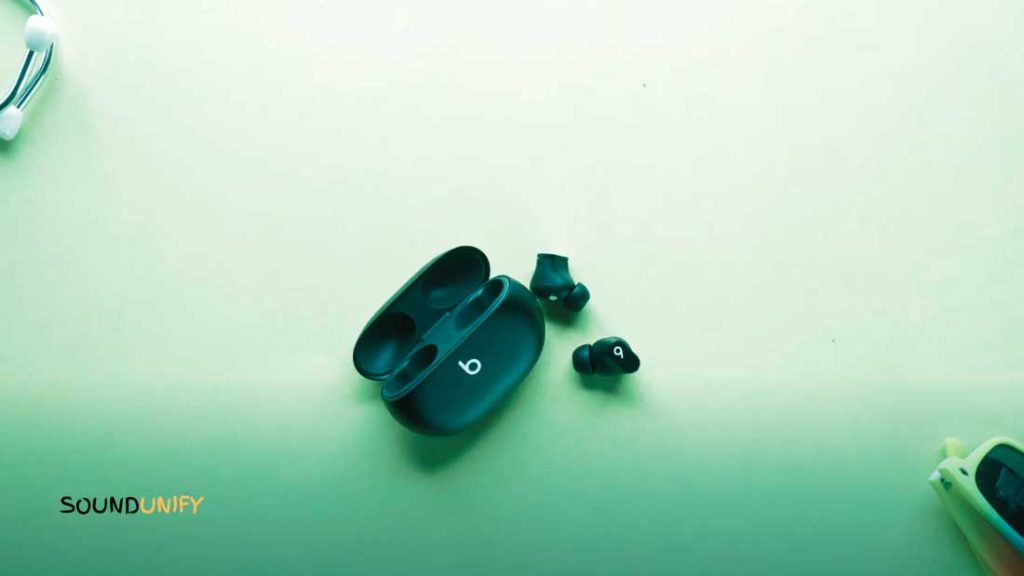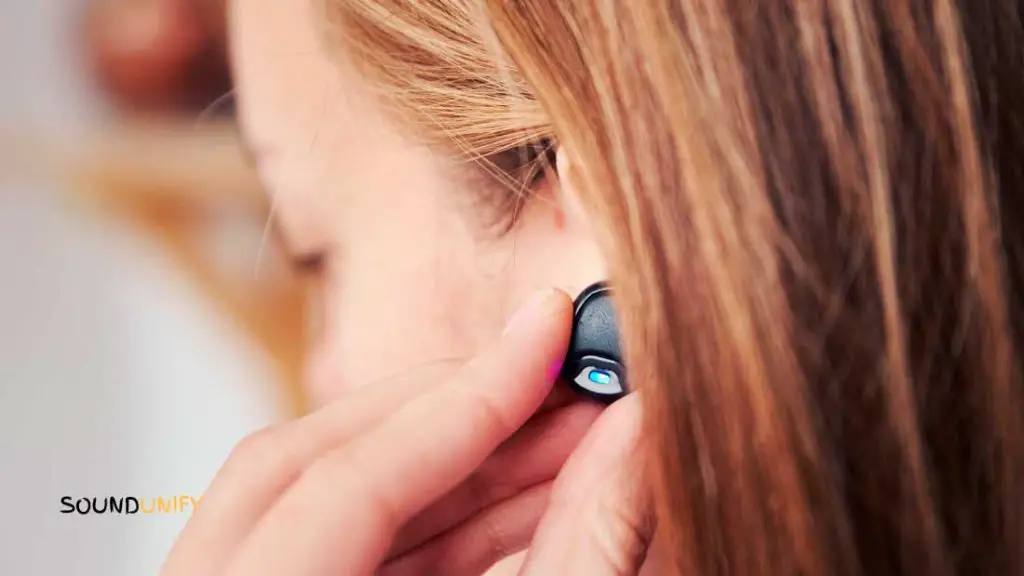As I plugged in my new earbuds, excited to listen to my favorite playlist, I was immediately disappointed. The sound quality was different from what I expected.
I wanted to know if the size of the earbuds had anything to do with it. This left me wondering, Does earbuds size affect sound quality?
Yes, the size of your earbuds can impact the sound quality you experience. Earbuds come in different sizes to cater to different ear shapes and sizes. And finding the right size can improve the quality of sound you hear. The size of the earbud affects how well it fits into your ear. This affects:
- How much external noise is blocked out
- How much bass is produced
- How clear the sound is
Knowing how earbud sizes can impact your listening experience is important if you frequently use earbuds. I aim to provide a comprehensive guide on how earbud sizes affect sound quality.
By the end of this article, you’ll better understand how to optimize your listening experience with the right size earbuds.
Does Earbuds Size Affect Sound Quality?

Already you know the answer. The size of your earbuds affects how they fit in your ears and how much external noise they can block out.
The measure also influences how much bass is produced and the sound’s clarity. The right size earbud can result in a muffled or unclear sound.
But things get confusing because each earbud size may produce a different sound. Some earbud sizes make a louder sound, while others have a clear sound.
Because of the variety of shapes and styles earbuds come in, it can take time to determine which will work best for you.
When selecting the right earbud size, it is essential to consider your ear shape/size. Different earbud sizes accommodate other ear shapes and measure better.
Finding the perfect fit will optimize your listening experience with the highest-quality sound.
How Does Earbuds Size Affect Sound Quality?

The earbuds’ size affects how the sound waves travel from the earbud to the ear canal. Which can impact how the listener perceives the sound.
Here are some ways in which earbud size can affect sound quality:
1. Bass Response
Smaller earbuds often produce less bass response, as the size of the earbud restricts the amount of air that can hold within.
As a result, the bass notes could be more powerful and deep. But larger earbuds can keep more air and thus produce a more powerful bass response with deeper notes.
2. Treble Clarity
Smaller earbuds may also struggle to reproduce higher frequencies and complex layers with much treble.
This can lead to distorted or muffled sounds. Larger earbuds provide more space for frequencies and can result in a clearer treble.
3. Mid-Range
The mid-range frequencies also tend to suffer on smaller earbuds, as the sound waves are restricted and lack space to provide a full range of notes.
Larger earbuds can offer better mid-range reproduction and can produce richer-sounding audio.
3. Audio Isolation
The size of the earbuds can also impact how well they fit in the ear canal. That can affect their ability to block outside noise.
Earbuds that do well in the ear canal can provide better noise isolation. It reduces external noise and improves sound quality.
4. Comfort Level
The size and type of earbuds can also affect the comfort level of the headphones. Smaller earbuds can pressure the ear canal. In comparison, larger earbuds are often more comfortable.
5. Soundstage
The size and type of earbud can also affect the ‘soundstage’ or the scope and depth of the “listening space”.
Smaller earbuds produce a more flat and two-dimensional soundstage. But larger earbuds often provide a more immersive three-dimensional soundstage.
6. Sound Leakage
Earbuds that don’t fit well can make noise leak out and hear by others. This can result in a reduction of sound quality for the listener and can be an annoyance for others.
7. Durability
The size of the earbud can also affect the durability of the headphones. Smaller earbuds may be less durable than larger models, as there is less material and less protection against the elements.
What Earbuds Components Can Affected Sound Quality?

Besides earbud size, other components can affect the sound quality of your earbuds. Some of these components include:
- Type of earbuds
- Material of the earbuds
- Driver type (dynamic, balanced armature, or planar magnetic)
- Impedance
- Sensitivity of the earbuds
Here are the components and how they can impact sound quality:
1. Type of Earbuds
Earbuds are a great way to listen to music or other audio. They come in two main types:
- In-ear monitors (also known as IEMs)
- Earbuds
The type of earbuds you choose can play a massive role in the sound quality you get from them. In-ear headphones are inserted into the ear canal and use a seal to block out background noise.
This allows for better sound isolation, while earbuds are placed outside the ear canal and provide less isolation.
2. Material Of The Earbuds
The material of your earbud is also important when it comes to sound quality. Foam, rubber, or silicone ear tips provide more sound isolation than hard plastic ear tips.
The shape of these materials can also affect sound quality. Double-flanged tips create a better seal inside the ear than single-flange tips. This will help reduce background noise.
Foam tips provide the best seal but can be difficult to put on correctly and may cause discomfort over time due to sweat build-up.
Rubber and silicone tips are more comfortable but may only fit some people’s ears correctly, resulting in poor sound quality.
3. Driver Type
The type of driver in earbuds affects sound quality. Drivers are made up of two parts:
- A diaphragm
- A voice coil
The diaphragm produces sound, while the voice coil transfers electrical signals into sound waves.
The type of driver used in an earbud will determine how well it reproduces different frequencies and good quality.
- Dynamic drivers are the most common type used in earbuds and have been around for decades. They consist of a voice coil and cone-shaped diaphragm, which vibrates to produce sound. Dynamic drivers typically make good bass responses.
- Balanced armature drivers are smaller than dynamic drivers and consist of two small arms. They vibrate when an electrical signal is sent through them. Balanced armature drivers provide excellent detail, fidelity, and accuracy at higher frequencies.
- Hybrid earbuds combine dynamic and balanced armature drivers to get the best of both worlds. It has a great bass response with high-fidelity audio reproduction at high frequencies. IEMs (in-ear monitors) typically use hybrid driver technology for optimal performance.
4. Impedance
It’s a measure of the electrical resistance of the headphones. That impacts how they interact with your audio device.
Impedance directly affects how much power the earbuds can handle and how loud they will play. Lower-impedance earbuds need less power to reach higher volumes.
They are better suited for portable audio players like cell phones, tablets, and other mobile devices. Higher-impedance headphones need more power to reach higher volumes.
But often deliver better sound quality and bass response with proper amplification.
5. Sensitivity Of The Earbuds
Sensitivity is an essential factor in determining the sound quality of earbuds. The sensitivity of an earbud measures how the audio signal is converted into sound waves.
Generally speaking, the higher the sensitivity rating of an earbud, the louder and more precise it will be.
How Proper Can Earbuds Fit Improve Sound Quality?

Proper earbud fit is essential for improving sound quality. Here are some ways a good fit can help:
1. Improved audio isolation
When earbuds fit tightly into the ear canal, they create a better seal and isolate the sound. This improves the overall sound quality by reducing background noise and external distractions.
2. Deeper bass and better mid-range
Well-fitting earbuds also provide better bass and mid-range response. Also, allow more sound from the drivers to reach the eardrum. This provides a fuller, richer, and more immersive listening experience.
3. Improved soundstage
A proper fit improves the soundstage, which is how the audio is spread in the room. A looser fit creates a more two-dimensional sound. While a tight fit provides a more three-dimensional soundscape.
Ensuring your earbuds fit is important to get the best audio quality possible. Different sizes and types of earbuds are available. So make sure to get the right ones for your ears.
4. Bass response
A proper fit can also improve bass response. When the earbud fits snugly in the ear canal, it creates a seal for better bass response.
This is because the seal prevents air from escaping, which results in a more powerful and defined bass.
5. Clarity
A proper fit improves clarity as the earbuds sit closer to the eardrum. This helps the audio reach the eardrum more clearly and reduces distortion or muffling.
Ultimately, a good fit helps to improve the audio quality of your earbuds and the listening experience.
How to Choose the Right Earbuds Size for Sound Quality?
Choosing the right size and type of earbud is important to get the best sound quality from your headphones. Here are some tips to help you select the best one:
1. Consider Your Ear Shape
It’s important to pay attention to the shape and size of your ears when selecting an earbud. Different earbuds are designed to fit different ear sizes and shapes.
This can affect how the earbud sits in the ear canal and affect sound quality. It’s essential to take ear shape into account when selecting an earbud.
2. Try Different Sizes
It’s also a good idea to try different sizes and types of earbuds to find the best fit for your ears. And the kind of sound you are looking for.
Pay attention to how well the earbuds seal in the ear canal and make sure they don’t move around too much in your ears.
3. Look for Quality Materials
It’s also important to look for earbuds made with quality materials. The better the quality of materials used, the better the sound quality.
4. Consider Your Listening Environment
It’s important to consider your listening environment when selecting an earbud size.
Larger earbuds may be your best option if you plan on using your earbuds in noisy environments, such as in public or a busy workplace.
They will provide better sound isolation and reduce distracting noise.
5. Test Different Types
It is also recommended to test different types of earbuds to find the one that fits your needs and preferences best.
For example, in-ear earbuds are more comfortable and provide better isolation. But over-ear buds offer better soundstage and bass response.
Considering all these factors, you can find the best type and size of earbuds for the best possible sound quality, comfort, and experience.
How to Determine the Right Earbuds Size for Your Ears?
To determine the right size and type of earbud for your ears. It is important to look at the shape and size of your ears. Here are some steps you can take to determine the right earbud size for your ears:
1. Measure the diameter of your ear canal
The easiest way is to press your finger into the area in front of your ear canal, where you can feel your earring when worn.
Measure the diameter of the area and take note of the measurements. You should match the earbud size to the measurements you took.
2. Test different earbud sizes and materials
Try different sizes and types of earbuds until you find one that fits your ears. It’s important to ensure that the earbud fits snugly in your ear canal and doesn’t move when you move your head or jaw.
Try different materials, which can affect sound quality. Foam ear tips provide better insulation but may become uncomfortable after prolonged use.
3. Make sure the earbuds are comfortable
It’s important to make sure you choose a pair of comfortable earbuds. Choose earbuds that are neither too tight nor too loose so that there is no discomfort.
If you’re using headphones for extended periods, you should also ensure that the earbuds don’t cause any soreness in your ears.
FAQ
Is it better to have bigger or smaller earbuds?
It depends on what you want out of your earbuds. Smaller earbuds are often more portable and easier to insert into the ear canal.
Still, they offer less isolation from external noise and may not deliver as powerful bass and mid-range frequencies.
Larger earbuds often provide better noise isolation, soundstage, and bass response.
What is the best type of earbud for sound quality?
The best type of earbud for sound quality depends on what you want out of your earbuds. Over-ear earbuds offer better soundstage and bass response.
At the same time, in-ear monitors provide better sound isolation. Hybrid earbuds combine the best of both worlds. It offers good fidelity, clarity, and bass response.
What size earbuds should I buy?
The earbuds you should buy depend on the size and shape of your ear canals. It’s advised to measure the diameter of your ear canals before trying different sizes and types of earbuds until you find one that suits you well.
What size earbuds suitable for small ears?
It is best to try earbuds between 6mm and 8mm for people with smaller ears. Smaller earbuds can provide better sound isolation and a tighter fit in the ear canal, resulting in better sound quality.
What size earbuds suitable for big ears?
It is best to try earbuds between 9mm and 12mm for people with more oversized ears.
Larger earbuds can provide a better bass response and a more immersive listening experience.
They offer a better soundstage and provide more space for spreading frequencies.
Final Through
Before shopping for your next pair of earbuds, it’s important to consider the size and type of earbuds you’re looking for. Read my next article to learn more about other sound quality factors.
James Dimento is a Chief-in-Editor of SoundUnify. He is a headphone enthusiast and creative writer passionate about audio technology. He has three years of experience writing about headphones and sound quality and is responsible for creating reviews and taking care of all administration.
